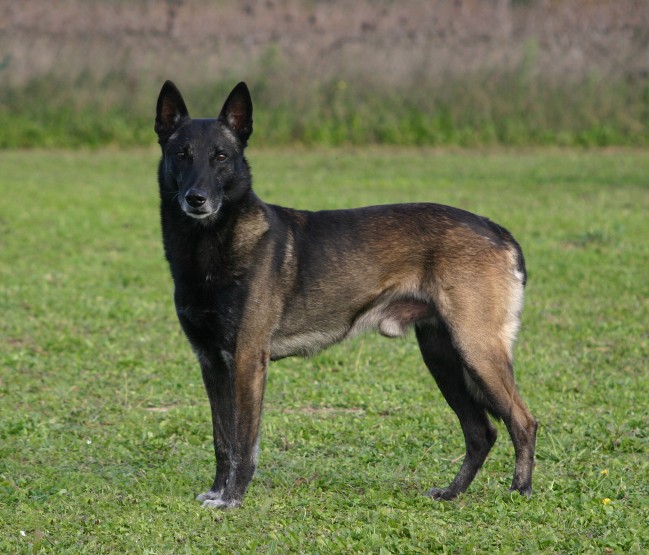

For a long time, the Belgium Malinois has been used as a working dog because not only are they incredibly intelligent, their instinct to protect is pretty amazing too. Hence these lovely looking dogs have been a popular choice as watch dogs in their native Belgium and now elsewhere in the world too.
Like many other pure breeds, the Belgium Malinois is prone to suffer from its fair share of health issues, some of which are acquired, but many are hereditary disorders too and one that seems to plague the breed is epilepsy. Dogs typically start to show symptoms of the disorder when they are between 2 to 5 years old and it can be very distressing for owners to witness a seizure the first time it happens to their dog. Sadly, all too often nobody actually knows why some breeds are more prone to developing the condition and it could be a congenital or a genetic disorder that Belgium Malinois inherit from parent dogs although more research is needed to establish whether or not this is so.
Epilepsy is a term that describes a seizure, but it can also describe when a dog has a fit or when they experience some sort of convulsion. In short, all of these are the same and it's when the brain discharges a lot of neurons at the same time which results in a dog experiencing a lot of involuntary contractions in their voluntary muscles. However, it also results in a dog behaving strangely too which often sees them staring into the distance or one side of the face starts to twitch. They may start gnashing their teeth for no apparent reason or doing their business inside the house which is something they never do.
When a dog has a seizure it can stop as suddenly as it first started leaving owners very confused as to what just happened to their pets. It can be a very worrying time and dogs that experience an epileptic seizure need to be checked out by a vet as a matter of urgency.
When a dog has an epileptic seizure, there are 3 things that happen which are as follows:
Aura - your dog will display certain signs they are about to have a seizure which may include the following:
Ictus - this is the next stage when a dog actually starts to have a seizure which can last as short a time as seconds or minutes. A dog sometimes falls over on their side before kicking and paddling their legs. They tend to salivate a lot and often lose control of their bladders resulting in them urinating on themselves as they lie there. Dogs are usually unaware of where they are at this stage of their seizure
Postictial stage - once a dog is over their seizure, they go into this stage and it's when they appear to be totally disoriented and very confused. All too often they start to pace and may continue to salivate a lot being quite unresponsive to your calls. Some dogs seek their owners out looking for comfort. The worrying thing about this stage of a seizure is that it can last for a few days.
If your Belgium Malinois experiences any sort of seizure, it's important that you remain as calm as possible and to remember that your dog is not suffering or experiencing any sort of pain of discomfort when they are having a fit. Worryingly it may seem like your pet is not breathing, but in actual fact they are. You should time how long the fit lasts and although it may seem like ages, it could only be a matter of seconds.
You need to make sure your dog cannot hurt themselves on any furniture or other objects that might be close by when they have a seizure which means moving everything out of the way. If you can you should place a pillow under your dog's head to reduce the risk of them hurting it which could cause a trauma.
You also need to make a note of any and all muscle movement as well as any abnormal behaviour your dog might display when they are fitting. This information is invaluable to a vet who would need to keep records of everything that happens whenever your dogs has a seizure. Should a fit last any longer than 5 minutes, you need to phone the vet and get your dog to the surgery as a matter of urgency.
Things to bear in mind when your dog has a seizure:
When your dog does come around from a fit, you need to keep them safely away from any stairs or water until they are fully recovered and back to being themselves again. You can give them a drink of water if they want one, but you need to keep an eye on them because they may stumble around for a while once they stop fitting. You need to remain very strong and calm so that you can offer all the comfort your dog needs which can last anything upwards of 30 minutes once their seizure has stopped. You then need to get them to the vet as soon as you can so your dog can be thoroughly examined and given the right sort of treatment if a vet thinks this is necessary.
Copyright © 2005-2016 Pet Information All Rights Reserved
Contact us: www162date@outlook.com